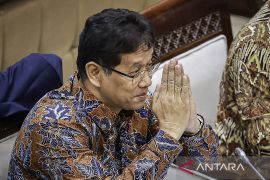The business sector did not need alternative sources of fund to increase production, Bank Indonesias head of statistics Hendy Sulistiowati said here on Tuesday.
"We see our exports are still in the negative territory both exports of manufactured goods and primary commodities," Hendy said.
Statistics showed that foreign debts of the private sector dropped 3.1 percent to US$165.1 billion year-on-year in the second quarter of this year or 51 percent of the countrys total foreign debts.
The decline in the second quarter followed a slow growth of 1 percent (yoy) in the first quarter of the year, the statistic showed.
The decline in the debts of the private sector until the first half of the year had been predicted by the central bank, after exports of manufactured good were stagnant in the first and second quarters, Hendy said.
The business sector was not encouraged to increase production as the exports remain weak, he added.
As a result, the business sector chose to repay or reduce debts rather than making new debts, he said.
However, indications of improvement in exports could trigger expansion by the business sector in the third and last quarter of this year, he said, adding "and for that they would need additional loans."
He said based on business surveys he believed the condition will improve in the coming months and the manufacturing sector would start expansion.
In the second quarter of 2016, private debts in the manufacturing sector fell slightly in May but rose in June to US$34.3 billion.
Hendy predicted that foreign debts of the private sector would increase in the third and fourth quarters of this year but the increase would not exceed the limit of their repaying capacity.
Altogether, the countrys foreign debts by the end of June, 2016 totaled US$323.8 billion or 6.2 percent higher than a year earlier.(*)
Editor: Heru Purwanto
Copyright © ANTARA 2016








